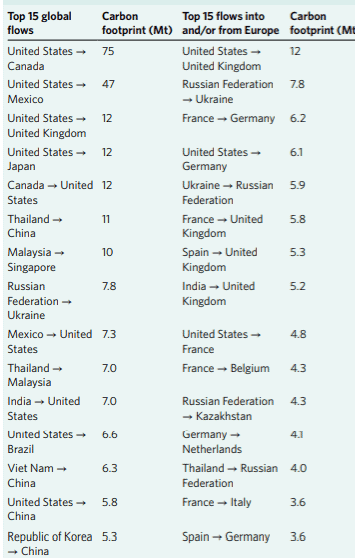A new study found that overall, tourism might account for almost four times more emissions than we thought.
Who doesn’t like a good vacation? Detaching yourself from all the stress, going somewhere else, enjoying the fun and relaxation — but it all comes at a cost. It’s not just the money, but also the emissions. Global tourism is a trillion-dollar industry with a large-scale environmental impact. While previous studies found that tourism emissions account for 2.5–3% of global greenhouse gas emissions, researchers now report that the figure is actually closer to 8%.
Arunima Malik, Manfred Lenzen, and colleagues conducted a comprehensive analysis of tourism, finding that previous studies didn’t fully consider all the emissions embodied in transportation choices, and they also tended to ignore emissions from food and beverage production, infrastructure, and retail services at destinations.
[panel style=”panel-info” title=”Emissions” footer=””]Many of the things we do generate carbon dioxide (CO2). It’s not just transportation, but also food and clothes. For instance, eating a pound of beef produces more emissions than burning a gallon of gasoline, due to the CO2-emitting processes associated with beef production.[/panel]
“By definition, the carbon footprint of tourism should include the carbon emitted directly during tourism activities (for example, combustion of petrol in vehicles) as well as the carbon embodied in the commodities purchased by tourists (for example, food, accommodation, transport, fuel and shopping),” researchers write in the study. “Tourism carbon footprints therefore need to be evaluated using methods that cover the life cycle or supply chain emissions of tourism-related goods and services”
Interestingly, the study reports that tourism emissions are tightly associated with income — the wealthier you are, the more you travel, and the more likely you are to travel to an exotic, faraway place. The carbon footprint decreased slightly with technology, due to energy-saving tech and transportation. The time of travel seemed to have no influence over the total generated emissions.

Americans were responsible for the most emissions, taking the top four spots. Americans traveling to Canada generated 75 megatons of CO2, followed by Americans in Mexico, Americans in the UK, and, surprisingly, Americans in Japan.
Importantly, emissions produced through tourism are experiencing a slow but steady increase. Researchers also note that a big part of these emissions are not targeted by the Paris Agreement and are therefore unlikely to be reduced. Furthermore, under Trump, the US, the largest contributor to these emissions, has vowed to back out of the Paris Agreement. As global GDP increases, tourism emissions are set to grow.
Researchers encourage people to seek out more eco-friendly travel opportunities. Try to travel closer to home, if at all possible. When at the destination, public transportation or biking can be used instead of renting a car. Eating foods that are local grown (and less meat) can also help reduce emissions. For more information, read our full article on ecotourism and why we need more of it.
The study has been published in Nature Climate Change.



